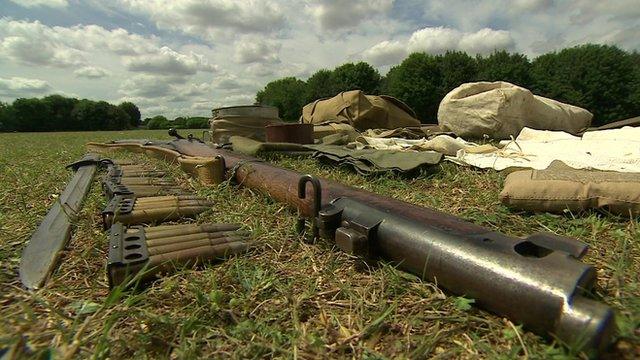WW1 centenary: The villagers who returned to the Somme
- Published
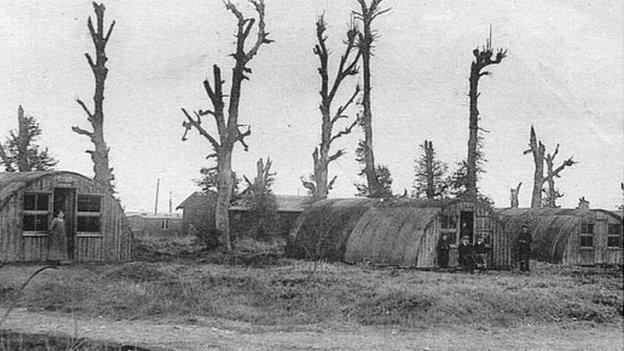
The first homes erected at Maurepas after the war were built in a shattered landscape
The villages of the Somme have long since been rebuilt, the lines of the trenches have disappeared, and once-cratered fields run smooth beneath the tractor.
But the imprint of World War One will never entirely disappear from places like Maurepas, which was just behind the German lines; or Bouzincourt, which was just behind the British.
Both villages were more or less obliterated by the opposing sides' artillery, and then in the Somme fighting of 1916 and 1918.
Bouzincourt was originally billeted by French troops but the British arrived in early 1916. Most farming families left in order to escape the bombardments that preceded the Allied offensive of July.
They came back in the relative peace of 1917 but fled again with the German attack of early 1918 when Bouzincourt was once again on the front line.
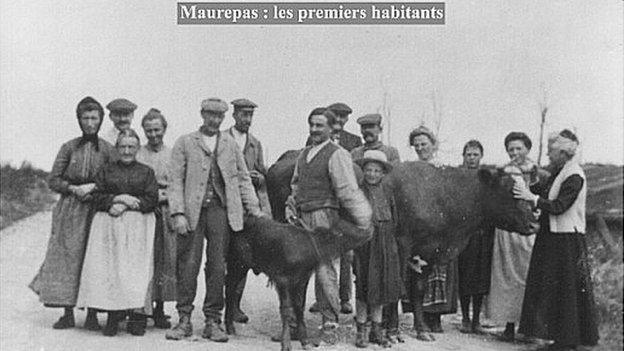
A postcard records the first villagers to return to Maurepas after the fighting
A few kilometres to the east at Maurepas, up until 1916 the inhabitants were in enemy territory. They were evacuated before the battle of the Somme, in which the village was eventually retaken by the French.
Pictures of both places taken in 1918 show scenes of utter devastation. Barely a wall is left standing.
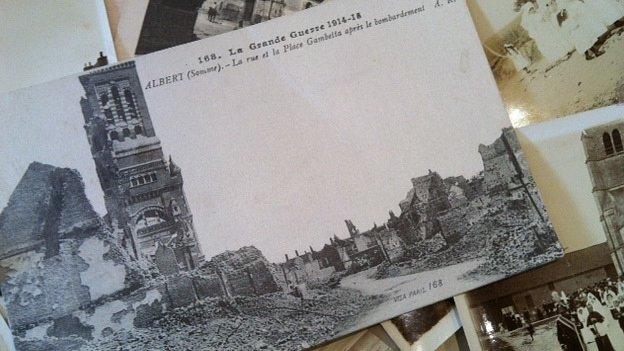
Postcards showed the destruction in French towns and villages
"The process of rebuilding took around 10 years," says Nathalie Clin-Trocq, who lives at Maurepas.
"The first few people came back a few months after the war, but they had nothing - just a few animals. They lived in huts made of corrugated iron with tar-paper roofs."
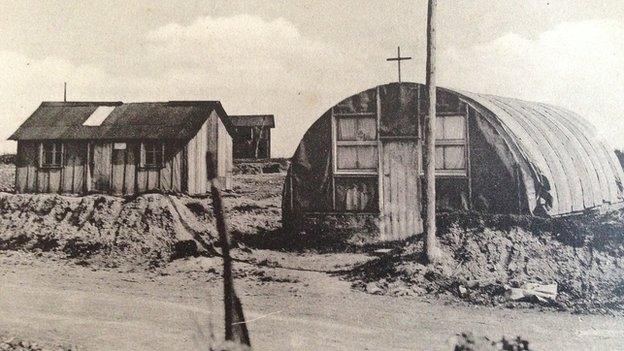
Makeshift buildings of corrugated iron made new homes - and in this case a church
A wealthy woman from Paris had lost her son in fighting near Maurepas. Visiting the place after the war, she took pity on the villagers and helped pay for new buildings.
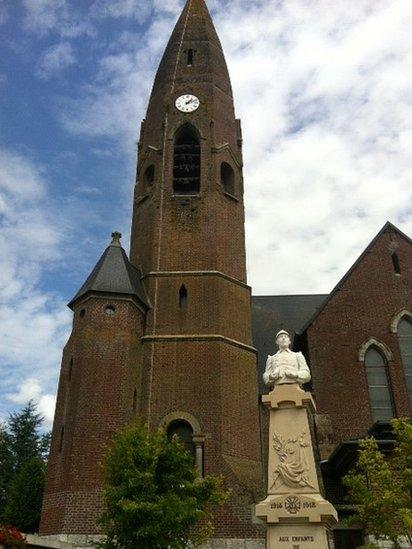
The rebuilt church at Bouzincourt is shaped like an artillery shell
Locals were united in their distress, but that did not prevent sometimes bitter disputes.
"The process of government compensation had huge potential for fraud," says Ms Clin-Trocq.
"It was hard to prove who had owned what, so basically the villagers with the biggest shoulders and the loudest voice came out with the best land.
"There are still families today in the area who refuse to talk to each other because of the rows over World War One compensation!"
Over in Bouzincourt, farmer Pierre Cotte - now in his 80s - recalls that reconstruction had its positive side.
"Before the war the lanes between the houses were so tiny, people could hardly pass each other. In the new village there was plenty of room. Plus they rebuilt in brick, when the earlier houses had been of clay and straw," he says.
Bouzincourt has other relics of the war. A road outside the village is still called the Chemin des Anglais. It was built by the British army to keep moving troops out of sight of German artillery.
Beneath the church there is also an old complex of tunnels which was used as a shelter by British troops. Hundreds of signatures and other inscriptions have been left, as well as rusty mess-tins and discarded boots.
Memories of the war were passed between the generations.
"My father told me stories," recalls farmer Patrice Caussin.
"He remembered French soldiers billeted on his farm sharpening their bayonets on the family millstone.

Beneath the church at Bouzincourt, soldiers carved messages and inscriptions
"And he told me how the British soldiers, when they came to Bouzincourt in 1916, couldn't work out what the red rags were fluttering on the barbed-wire in No-Man's-Land.
"Only later did they realise these were the remains of French soldiers who'd died and their bodies were rotting away. The red rags were the red trousers they wore at the start of the war."
In Maurepas, Francois Boucher, now in his 80s, also remembers a story from his father.
"There was a Monsieur Meurice in the village and he had a gun - which was strictly forbidden by the Germans. Someone shopped him to the Germans and he was executed.
"People said the reason he was betrayed to the Germans was that there was a row over land, and someone wanted him out of the way. Who knows? Maybe it was a way of settling a score.
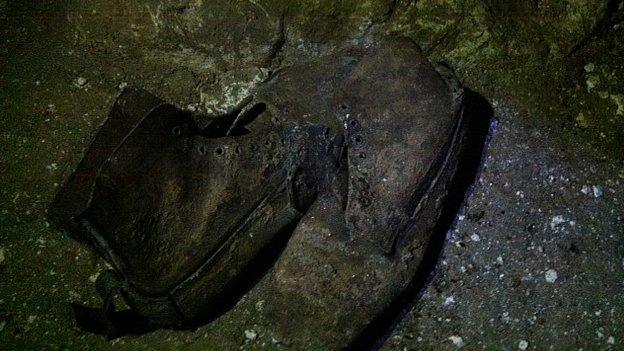
A pair of boots dating from World War One still lies in tunnels beneath Bouzincourt church
- Published4 August 2014
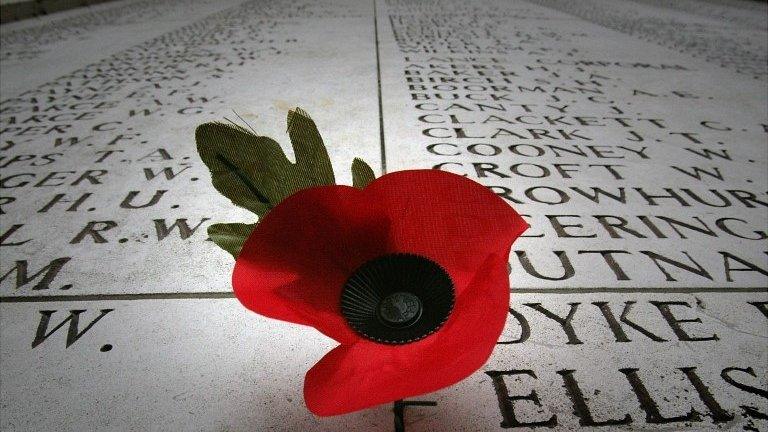
- Published4 August 2014
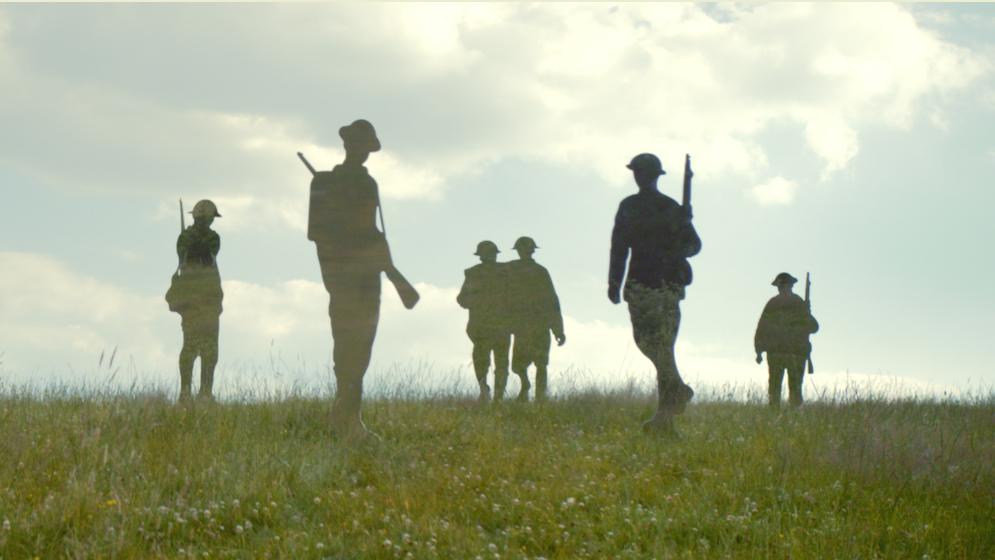
- Published2 August 2014
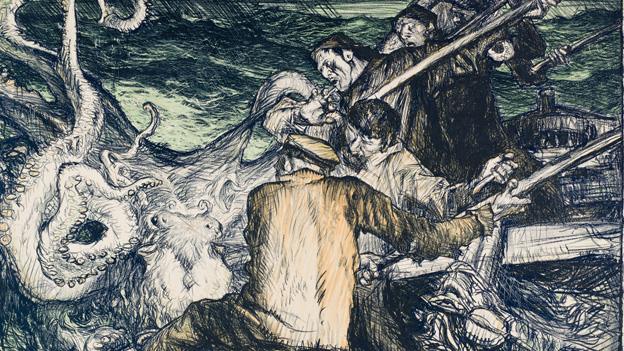
- Published1 August 2014

- Published31 July 2014
